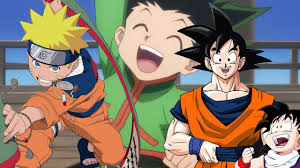
The history of anime is rich and filled with fascinating evolution. It has developed from simple, hand-drawn animation to an industry that shapes global pop culture. Here’s a brief timeline of its development:
a. Early Beginnings
- 1917: The first known anime short film, Namakura Gatana (The Dull Sword), was created by Jun”chiro Tanaka, marking the start of Japanese animation.
- 1930s-1940s: The rise of more professional studios and animated features, like Momotaro: Umi no Shinpei (Momotaro, Sacred Sailors), which was the first feature-length anime film produced by the Imperial Navy during WWII.
b. Post-War Growth and Rise of Iconic Series
-
1950s-1960s: Osamu Tezuka, the “God of Manga,” revolutionized the art form with his creation of Astro Boy (Tetsuwan Atom), which became one of the first anime series in the modern sense. This era marked the beginning of the rise of anime as a mainstream entertainment form in Japan.
-
1970s: The 1970s introduced a number of iconic anime that helped establish the industry’s foundation. Series like Mazinger Z and Mobile Suit Gundam gave birth to the mecha genre, while Lupin III gained international fame.
-
1980s-1990s: The golden era of anime began with more experimental and visually rich
anime
films. Studio Ghibli released their first film, Castle in the Sky, in 1986. At the same time, anime TV series like Dragon Ball Z, Sailor Moon, Pokémon, and Yu Yu Hakusho became international hits. The 1990s also saw anime becoming more mainstream in the West.
c. Modern Anime
- 2000s-Present: The 2000s saw an explosion of diverse anime, with genres expanding into slice-of-life, isekai, sports, and more. Titles like Naruto, Bleach, One Piece, and Attack on Titan helped solidify anime’s global appeal, and platforms like Crunchyroll and Netflix made anime even more accessible worldwide.





Leave a Reply